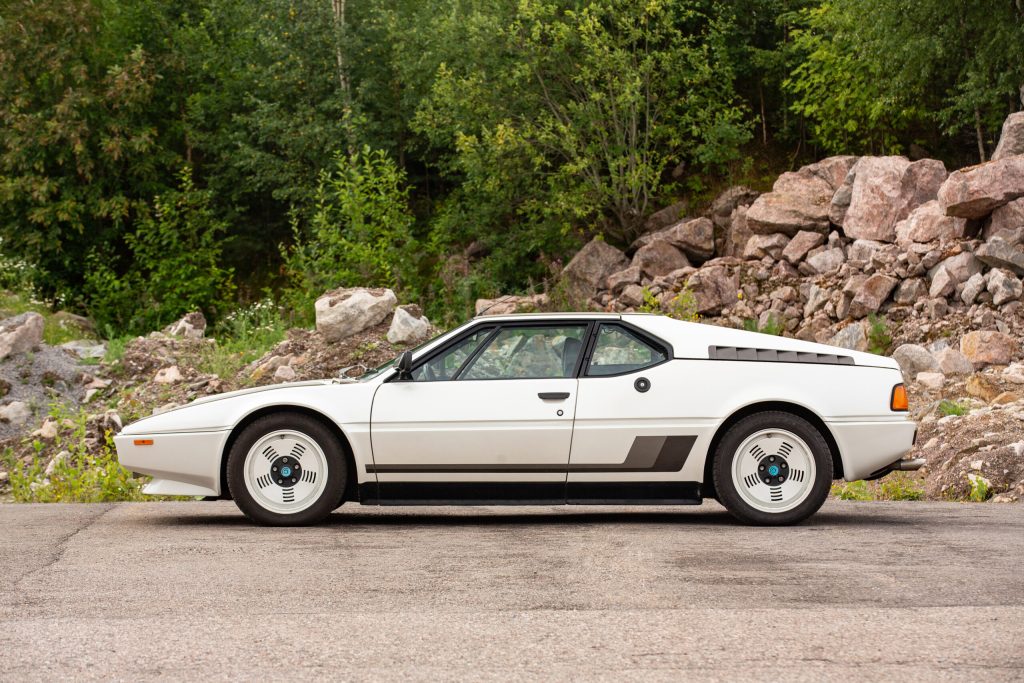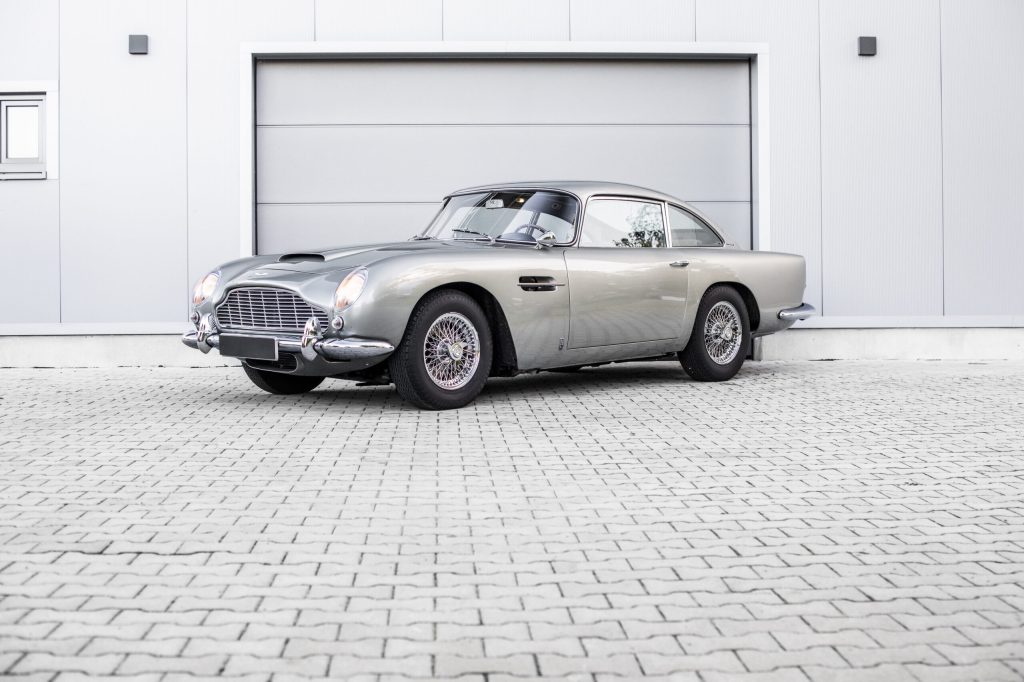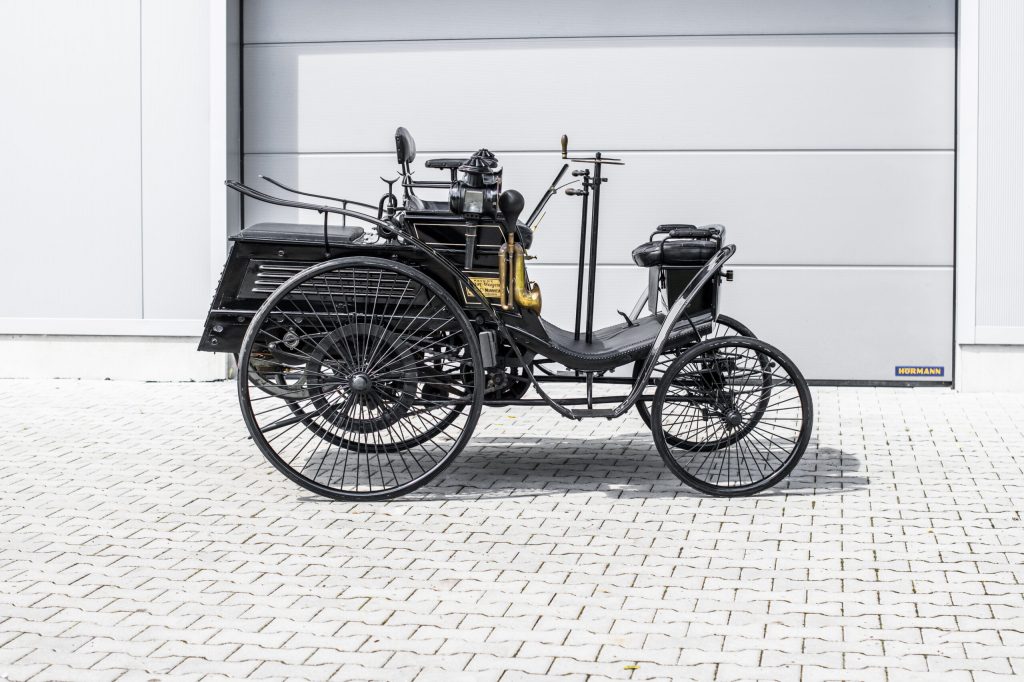RM Sotheby’s finished its last European sale of 2024 with €23M (£19.1M) in total sales. Held 23 November in Munich, Germany’s third-largest city, the auction naturally offered plenty of German classics, many of them from two featured collections. BMW and Mercedes-Benz fans in particular had plenty to drool over.
Model years spanned 1897 to 2022, and sale prices ranged from low five figures to well into the millions, including a fascinating Mercedes Indy 500 racer from 1923 and a Porsche 550 Spyder from 1955. Our colleague, Chris Sharpe, was on hand to look at the cars in person and provided valuable notes on car condition and history. We look at the most interesting and significant stuff from RM Sotheby’s Munich 2024 below.

Lot 120: 1972 BMW 3.0 CSL

Sold for €100,625 (£83,725)
Chassis no. 2285250. Ceylon Metallic and black over black. Older restoration, #3+ condition.
Equipment: RHD. 3003cc/200bhp, four-speed, chrome wheel-arch trim, alloy wheels, Scheel sports seats, three-spoke steering wheel, power windows, pushbutton radio, jack, tool kit, spare.
Condition: From the “Munich Masterpieces” collection, offered without reserve. One of just 500 right-hand drive CSLs. Bought by the collection in 1999 with an older restoration and comes with a history file. Crisp paint with a deep shine. Wonderful original-looking interior that looks unmarred. Mild signs of use under the bonnet. No major issues, just general age.
Bottom line: The BMW 3.0 CSL was a homologation model to qualify for the European Touring Car Championship. Based on the 3.0 CS, the “L” for the lighter model refers to the thinner steel, deleted trim and soundproofing, and aluminium alloy for the doors, bonnet, and boot lid. Just 1265 were built, and remarkably 500 of them were configured in in RHD. The Ceylon Metallic colour on this car is relatively rare, very ’70s, and quite handsome, but the slightly aged condition, no reserve, and RHD configuration in a LHD country didn’t do it any favours. It sold slightly under its low estimate, but it’s still a fair result, all things considered.
Lot 121: 1956 EMW 327/2 Sport Cabriolet

Sold for €109,250 (£90,902)
Chassis no. 87727. Red and black with black top over burgundy leather with tan piping. Older restoration, #3+ condition.
Equipment: 1971cc six-cylinder, four-speed, hub caps, boot cover.
Condition: From the “Munich Masterpieces” collection and sold without reserve. Reportedly one of 152 built. Delivered to Finland in period and spent years in a barn there, then bought by the collection in May 2004 ahead of a restoration. Good paint that is holding up well. The wheels are smartly restored. Great chrome and a perfectly clean front grille. The interior has new leather and new carpets. Solid example of an interesting car.
Bottom line: No, there are no typos in this car’s description. EMW – not BMW – built this car. BMW is famously a Bavarian company, but after World War II its factory in Eisenach found itself on the other side of the Iron Curtain, in the Soviet occupation zone. It kept building BMWs from 1945 to ’51, but in 1952 the factory changed its name to EMW (Eisenacher Motorenwerk), and EMW made prewar designs like the 327 well into the 1950s. In 1954, the company was renamed Automobilwerk Eisenach (AWE). The easiest way to tell these sort of Bizarro World BMWs is by their badge, which is a red-and-white beachball instead of blue-and-white one.
EMWs are mainly of interest to BMW collectors and there were a remarkable five EMWs (four cars and a motorcycle) on offer at this auction. All of them sold reasonably well, including this one, though the proper BMW-badged 327 Sport Cabriolet sold a few lots later brought an understandably higher €146,625 (£122,000) final price.
Lot 126: 1963 BMW 3200 CS by Bertone

Sold for €59,800 (£49,757)
Chassis no. 76184; Engine no. 21994. Dark blue over red leather with light grey inserts. Older restoration, #3 condition.
Equipment: 3168cc/160hp overhead valve V8, four-speed, wheel covers, wood dash.
Condition: From the “Munich Masterpieces” collection and sold at no reserve. One of 603 examples made between 1962 and 1965. Delivered new to Germany then part of the collection since 2008. Accompanied by its period Kraftfahrzeugbrief registration document. Decent paint with some swirl marks. A superbly preserved front grille is matched by great chrome. The engine bay is tidy. The interior is clean but the leather has some cracking and there is some warping on the dash. In driver condition but quite handsome.
Bottom line: The BMW 3200 CS was made between January 1962 and September 1965. It was designed by Guigiario at Bertone and was introduced at the 1961 Frankfurt motor show. Its attractive shape shares some cues with Bertone’s coupe designs for Alfa Romeo, and was the last BMW based on the company’s large, expensive, and not-very-profitable line of luxury cars from the early postwar years. The price for this one is lower than the car’s condition would suggest, but the market in its home country (where 3200 CSs are more common) must be different, because the price in euros is at the top end of its presale estimate range.
Lot 130: 1979 BMW M1 ‘Exclusiv by Walter Maurer’

Sold for €477,500 (£393,303)
Chassis no. WBS59910004301135; Engine no. M88242. White with black and grey side stripes over black leather. Visually maintained, largely original, #2 condition.
Equipment: 3453cc/277bhp inline-six, ZF five-speed, limited-slip differential, Campagnolo wheels, Becker Mexico radio.
Condition: From the “Munich Masterpieces” collection and sold at no reserve. Wears unique paintwork styled by the legendary artist Walter Maurer. Shows “Exclusiv” lettering and thought to be the only M1 road car to feature Maurer artwork. Accompanied by a copy of an August 2024 letter from Maurer, who recounts imagining the M1’s unique finish with the car’s first owner. The pearlescent white paint has an impressive shadow effect on the nose, roof, and engine cover. There’s a minor graze on one front alloy wheel rim. The engine is tidy and clearly well cared for. The interior is in great condition with no obvious wear. A significant car, well-kept, and very cool.
Bottom line: Known for his involvement in BMW’s famous Art Car series and his work on BMW’s M1 Procar racers, German designer and artist Walter Maurer reportedly painted just this one road-going M1. The price for it here, though, is surprisingly low. Several regular, factory-painted M1s have sold for over half a million dollars at auction this year, and an exceptionally clean one even brought $742,000 back in March. The buyer here essentially got a solid M1 with the significant and unique paint job thrown in for free.
Lot 140: 1969 Ferrari Dino 206 GT by Scaglietti

Chassis no. 00388; Engine no. 05136. Argento over black vinyl with blue cloth inserts. Recent restoration, #2 condition.
Equipment: 1987cc/180bhp V6, five-speed, Cromodora alloy wheels, wood-rim steering wheel.
Condition: One of 153 examples of the aluminium-bodied 206 Dino built from 1967 to 1969. With Ferrari Classiche certification from September 2007 and offered with its “Red Book.” Represented as retaining its matching-numbers chassis, alloy body, and two-litre V6 engine. Accompanied by a history report from marque specialist Marcel Massini. A great exterior with immaculate paint and freshly restored wheels. The dash looks original and very well preserved. The seat leather is high quality, and the blue cloth inserts are a neat and correct but rarely seen detail. A smart engine bay follows the theme of a very well-presented Dino.
Bottom line: About 20 times as rare as the later 246 Dinos, the 206 GT is naturally worth more than its steel-bodied successor. Even so, this car still sold quite well, bucking the general trend of softness in the classic Ferrari market and beating its high estimate by about €100,000.
Lot 150: 1965 Aston Martin DB5

Sold for €702,500 (£584,515)
Chassis no. DB52072L; Engine no. 400/2081. Silver Birch over beige leather. Older restoration, #2- condition.
Equipment: LHD. 3995cc/282bhp inline-six, ZF five-speed, chrome wire wheels with three-eared knock-ons, front seat belts, wood-rim steering wheel, Sundym glass, tool roll, pushbutton radio, Normalair air conditioning.
Condition: From the Aumann collection and sold at no reserve. One of only 193 examples of the DB5 coupe built in left-hand drive for the US. Sold new in California. Originally finished in Autumn Gold. Repainted black at some point in the 1970s. Represented as retaining its matching-numbers engine mated to a five-speed manual gearbox. Comes with a history file that includes a BMIHT Certificate and a copy of the factory build sheet. Excellent paint, body finish, and panel fitment. A clean engine but not overly polished. Great chrome. A solid DB5.
Bottom line: This car sold in 2018, still painted black and in rough #4 (“fair”) condition for $715,000 in Pebble Beach. DB5 and many other classic Aston prices have actually dipped since then, however, so despite the commendable work this car has received since its last auction appearance, this barely different result is still reasonable in today’s market.
Lot 151: 1897 Benz Velo

Sold for €398,750 (£331,780)
Chassis no. 610. Black over black. Older restoration, #3 condition.
Equipment: 1045cc single-cylinder, two-speed, belt drive, leather seating, tiller steering.
Condition: From the Aumann collection and sold at no reserve. It is the 610th example of approximately 1200 Benz Velos – the world’s first standardised serial production car – built from 1894 to 1902. It was the follow-up to Benz’s seminal Patent Motorwagen.
Supplied new to the Temperino Brothers in Turin, and remained in Italy until 2016. Has invoices from 2017 and 2018 that exceed €35,000. Could apply for the London to Brighton Veteran Car Run (subject to eligibility criteria). Good paint, and the hand-painted coachlines on the leaf springs and all over are smart and well done. The skinny, tall pram wire wheels look vulnerable but have clearly worked well, although the tyres need replacing. Durable leather seating looks comfy enough. The mechanicals look well kept and the strong chain looks taut. One of the world’s oldest cars.
Bottom line: With a top speed of 12mph and never more than 3 horsepower, the Benz Velo isn’t the most thrilling thing on four wheels, but it is significant. One took part in what is credited as the first-ever automobile race in 1894, and its 19th-century build date is an appealing factor on its own. So is its eligibility for the London to Brighton Veteran Car Run, which is only open to cars built before 1905. Benz Patent Motorwagen replicas are fairly plentiful and can sell in mid-five-figure territory, but this is a real-deal Benz that has survived 127 years, and this big price for it is deserved.
Lot 157: 1948 Veritas RS

Sold for €432,500 (£359,861)
Chassis no. 5042. Silver over black. Older restoration, #2 condition.
Equipment: 2.0-litre straight-six with three Solex carburettors, four-speed manual, aluminium body and steel ladder frame, centrelock wheels, dual aero screens, banjo steering wheel, engine-turned dash.
Condition: From the Aumann collection. An early RS example from 1948, based on a BMW 315/1 chassis. It sold new to Belgian racer and Équipe National Belge founder Johnny Claes and was raced by Claes in the 1948 12 Hours of Paris and the 1949 Brussels Grand Prix. It then went to the US. It has known period competition history in 1950s SCCA West Coast events. It was owned by Californian racer Walter ‘Watsie’ Roach from 1954 to 1986.
Subject to a restoration from 1991 to 1993, when it gained a new body (its original body is included). The beautiful body shape has race car paint with only a thin coat. The headlamps and grille have been perfectly restored. The wheels are crisply painted, too. The little aero screens are immaculate. The cockpit is tidy with good-looking controls and instruments. The engine-turned finish on the dash panel is delightful.
Bottom line: Veritas was founded in West Germany just after World War II. Starting out in Hausen am Andelsbach, Baden-Württemberg, the business moved as it grew and finally settled at the Auto Union works at the Nürburgring. The company was successful in the German racing scene in the early postwar years but didn’t last very long. Obscure but gorgeous, cars built by Veritas only come up for auction every year or two yet there were three on offer at this sale, including two open-wheel cars that sold for €320,000 apiece.
Lot 158: 1955 Porsche 550 Spyder by Wendler

Sold for €3,464,375 (£2,882,533)
Chassis no. 5500072; Engine no. P90077. Silver with blue tail stripes over beige. Recent restoration, #2 condition.
Equipment: 1498cc flat four, four-speed, fire bottle.
Condition: From the Aumann collection and is represented with its matching-numbers engine and gearbox. One of 90 Porsche 550 Spyders built. Sold new to Jack Manting of Big Rapids, Michigan, who used the car to compete in 13 SCCA events from 1956 to 1959. Then five owners before joining the Aumann collection in 1992. Subject to €21,000 worth of engine overhaul work in 2015 performed by marque specialist Karl Hloch. Sold with a history file and a set of spare wheels and parts.
Crisp paint, smooth panel surfaces, and correct gaps. The silver paint looks right but only has a thin finish with minimal shine. The wheels have been refurbished but the wheel hub flat faces have been left dull, which contrasts. Perfectly restored interior with everything looking just right. The original floor and exposed chassis rails show age-related originality. This car is in that lovely sweet spot of smart presentation but it is restored to a drivable level, too.
Bottom line: Drivable is good, because the urge to use this car would be great, and it would be eligible for pretty much all of the world’s great vintage sports car events, too. Its good history, and its rare distinction of retaining its matching numbers engine, justify the price.
Lot 164: 1923 Mercedes Type 122 Indianapolis Racer

Sold for €3,605,000 (£2,999,540)
Chassis no. 26913; Engine no. 10249. White over black. Older restoration, #3 condition.
Equipment: 2.0-litre supercharged dual-overhead-cam four-cylinder, wire wheels.
Condition: From the Aumann collection. One of four examples prepared by Daimler Motoren Gesellschaft (DMG) for the 1923 Indianapolis 500, with engine designed by Paul Daimler before he left the company. Piloted by Max and Karl Sailer in the race to finish eighth – the highest-placed Mercedes. This was the only time the factory entered its own cars into the race. Claimed to have known provenance since the 1930s. Entered into the 1936 edition of the Vanderbilt Cup and the Bridgehampton races. Formerly owned by Formula 1 executive Bernie Ecclestone and sold with a period body presented in bare metal.
This white Indy racer has a general aged patina to the paint – and a little too much of it. There’s paint on the front axle, on the brake drums, and the chassis rails – too much white paint – but that was the Indy look. The starting handle hangs low at the front but it is so well-made and purposeful. The radiator and surround have a wonderfully steep swept back angle that is so befitting of this era of racer. Inside, the strong steering wheel is string-wrapped. The chassis is open between the driver’s legs, exposing the pedal connection rods. The pure history of a 100-plus-year-old race car from a top marque like Mercedes is unmatchable, simply incredible. It’s the most fascinating car here by miles.
Bottom line: The Mercedes Type 122 has become known as the “2-litre Indianapolis racer” as it was built to new regulations that stated that engines should have a 2.0-litre limit in displacement with or without forced induction. There was a lot of prestige and US sales to be had from a good result in the Indianapolis 500-mile race. The Indy organisers had gone with the European engine formula for the 1923 race so the door was open for the Type 122 to enter.
The catalogue description for this car sums up the sale well: “The number of surviving supercharged Mercedes 2-Litre competition cars can be counted with one hand, so it is entirely possible that the opportunity to purchase one of the original cars, especially the lead Indianapolis racer, will never be repeated.”









